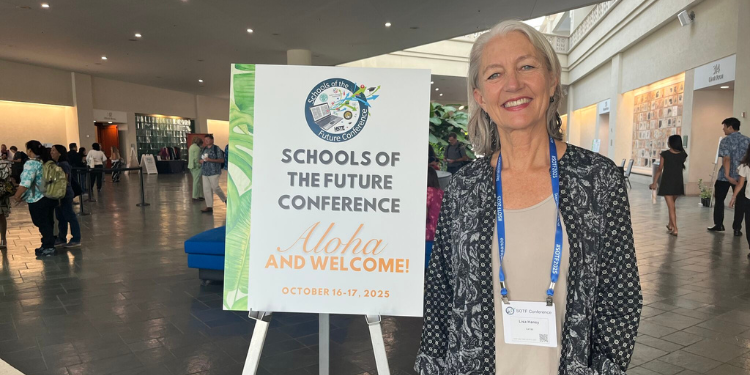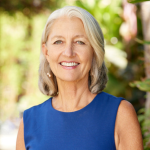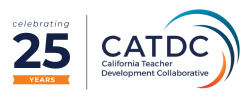Reflections from the Schools of the Future Conference

I’m not the first to say it, and I won’t be the last: “the future is here.”
That phrase echoed throughout the Schools of the Future Conference in Honolulu last week, where more than 1,500 educators from public, charter, and independent schools gathered to explore what’s next for teaching and learning. With the pace of technological change and the growing influence of generative AI, our field is certainly undergoing rapid change; many teachers and schools, however, are struggling to keep up.
Looking Back to Move Forward
Seventeen years ago, Sir Ken Robinson called for an end to the industrial model of education—one that too often stifled creativity in favor of conformity. Phil Bossert, former Executive Director of the Hawai’i Association of Independent Schools, reminded me that Robinson spoke at this very conference in 2010. His message, made famous by the RSA animation, still resonates: “the current system of education was designed and conceived and constructed for a different age.”
The first time I heard Robinson’s message, I was with my colleagues at The Athenian School. What drew me to Athenian—and kept me there for over two decades—was our shared commitment to being a true community of teachers and learners. The traditional dichotomies between “teacher” and “student” blurred; curiosity and learning flowed both ways.
That same spirit animates my work at CATDC. Our mission is to nurture a statewide community where educators can learn with and from each other—questioning, experimenting, and growing together, bringing creativity, equity and innovation to teaching and learning. Over the past two years, the new possibilities and problems sparked by AI have been a major thread in our programs and conversations.
Shaking Up Learning
Kasey Bell, the conference’s second-day keynote, echoed Robinson’s challenge: schools designed for another era cannot prepare students for this one. “Let’s change the conversation,” she urged. “What matters most is student learning and doing what’s best for kids. Things are changing fast. We are in desperate need of a shake-up.”
Her framework for what she calls “dynamic learning,” purposeful and student-driven, with or without technology, centers on the four C’s familiar to anyone who has studied 21st Century Skills: creativity, communication, collaboration, and critical thinking. With the forceful currents of change coming via generative AI, how do we not only improve teaching and learning with AI, supporting students to use it with appropriate guidance and guardrails, but also teach our students more about it?
From Innovation to Ethical Imagination
Similar themes came forward in the presentation by Shauna White of the Kapor Foundation, who challenged us to think beyond innovation toward justice. We must help students to become skilled users and careful and critical consumers of technology, particularly AI.
Her framing questions remain with me and are guiding my own thinking as I work with our team to consider how we are using generative AI internally and bringing more learning on this topic to our community: Who designs these systems? Who benefits? Who is left out—or harmed? These are questions every educator must wrestle with.
Listening to Students
Perhaps the most powerful sessions I attended were led by students themselves. In a presentation entitled “Is AI Demolishing My High School Education?”, juniors and seniors from four Oahu schools reflected with humor and hope on how AI is actually enhancing and extending their learning. As one young woman put it:
“If teachers reached out to students, they could learn so much. Encourage us to explore, and let us bring our learning back to you. That helps to create the kind of classroom we all need right now.”
Where Do We Go from Here?
Generative AI may be the push that finally compels us to fully reimagine teaching and learning and the very design of our schools. But first we need to listen to our students.
- What are your students telling you about AI?
- How can you partner with them to use it thoughtfully, creatively, and ethically?
- And how might we, as educators, model the curiosity and humility we hope to cultivate?
At CATDC, we’ll keep exploring these questions as we support teachers and leaders across California and beyond in building more connected and courageous learning communities. It is what we do together, in our classrooms, conversations with students and peers, and across school communities, that will define the future of learning, helping to shape the world we hope to see.

A lifelong educator of youth and adults, Lisa Haney believes deeply in the transformative power of education. She began her career focused on international and multicultural education, teaching in Japan, Mexico and Martinique before landing at the Athenian School in Danville, California. In her 25 years at Athenian she served in many roles, including international program director, literature teacher, and humanities department chair, before becoming dean of faculty development and a member of the leadership team. Beyond Athenian, Lisa has engaged in teacher education through UC Berkeley Extension, as well as the Berkeley and San Francisco Unified School Districts, and was selected for a year-long fellowship by the US State Department to support teacher development in Tanzania. Lisa holds a B.A. in English from the University of California, Berkeley and a M.A.T. from the School for International Training, Vermont. She is board chair at the Berkeley School and an enrolled student in a Masters/PhD program in community psychology at Pacifica Graduate Institute.
